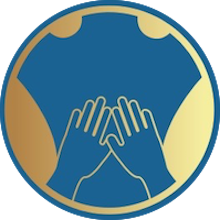
Scar Treatment and Scar Release Therapy SRT
Scar treatment for Plastic Surgery Scars, Orthopedic Scars, C- Section Scars and Breast Cancer Scar
FDA approved Microcurrent Point Stimulation (MPS)
Microcurrent Point Stimulation (MPS)
At Complementary therapies we specialize in using microcurrent point stimulation (MPS therapy) to treat chronic pain and scars. MPS therapy integrates the principles of acupuncture with modern neurological science providing a natural and holistic approach to treat the body and mind. They work together to provide highly effective, and natural relief from chronic pain, stress / anxiety, and can aid in scar release.
SRT Microcurrent Point stimulation (MPS), increases inter-cellular metabolism, protein synthesis and healing functioning to reawaken the skin's ability to self-generate. Scar Release Therapy (SRT) increases catabolism through cellular "repolarization".
Scar Release Therapy (SRT), is a safe, clinically tested and a highly effective technique developed and patented by the Center for Pain & Stress Research in reducing the negative influences of scars.
Scar and relating adhesions often compress nerves, affect muscle function, change energy flow, and affect blood and lymph flow through the affected area.
Scar release Therapy:
- Speeds up the healing process of the scar.
- Decreases pain in the connective tissue.
- Helps to relax and fade scar tissue.
We are able to visually change the appearance and mobility of scars. We often treat scars including those from breast augmentation or reduction or mastectomy, C-sections, removal of deep moles or skin lesions, facelifts, trauma scars, or any scars from surgeries.
The number of sessions is determined by the depth and healing capacity of the scar, and we will be able to further guide you regarding this during the appointment. You will see visible changes in the appearance of the scar and gradually will notice a reduction in the tightness and restriction felt at the site of the scar.
C-Section Scar Release therapy

Don't suffer more form pain that comes form abdominal scar, we are here to help.
More videos /information here in these links
Manual Scar Massage

What are scars?
Scars are the result of injury to the skin. Scars develop on and below the skin. Your body makes fibres out of something called collagen to strengthen the scar.
Your scar could become hard and inflexible or adhesions may form. Scars that cross a joint could stop you being able to bend or straighten the joint (a contracture). This may cause a deformity or may mean you have more limited movement which may affect the way you can use your hand.
When an injury occurs, the tissues go through 3 main stages of healing - Inflammation, Proliferation and Remodeling.
Inflammation, occurs initially. This is your body "kick-starting" the healing process. All kinds of chemicals and cells are acting fast to clean up the area and protect from further injury. The signs and symptoms may include Heat, Redness, Swelling, Pain, and loss of function.
The Proliferation stage. This is where the wound
attempts to "rebuild" by laying down new tissue and developing new
blood vessels.
The Remodeling stage. The wound is getting stronger, but the new
fibres aren't aligned well, so scar tissue is produced and can take from 6 months up to 2 years to fully mature.
Scar massage

Scar massage is a technique with moderate to deep pressure that prevent the scar from becoming hard and raised, and prevent it from sticking to the underlying tissues. This can be started when the wound is fully healed, usually as early as 3-6 weeks when there are no surgical staples, or scabs.
In the Scar massage, we the pad of the thumb or fingers directly on the scar and we rub in a circular matter. You will fill the correct pressure when the skin blanches, becomes white, under the finger and your fingers are not sliding over the scar but the scar is actually moving with the motion of the fingers.
We offer Scar management for:
- Post Orthopedic procedures.
- Post Onco-Plastic surgeries and reconstructions
- Post Cosmetic procedures and any other scar surgery.
If you need to talk about your scar case, or if you want to be added to the cancellation waitlist leave you message by text or voice mail indicating this and please leave your email address.
We are here to help!
404 507 2701
